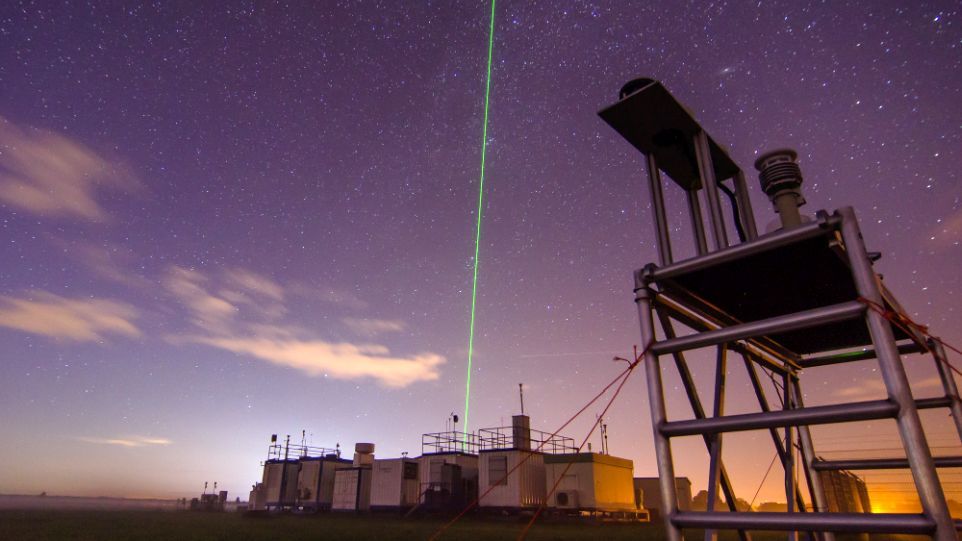
Understanding Climate Change

Germany is getting a new infrastructure for research on particulate matter, clouds, and trace gases. ACTRIS will enable better forecasts for air quality, weather, and climate in the future.
08/06/2021 · Umweltwissenschaften · Leibniz-Institut für Troposphärenforschung · News · Projekte
Germany is getting a new infrastructure for research on particulate matter, clouds, and trace gases. Distributed among eleven institutions, this German contribution to the EU research infrastructure ACTRIS will enable better forecasts for air quality, weather, and climate in the future. The Federal Ministry of Education and Research (BMBF) is funding the implementation of this infrastructure with a total of 86 million euros over the next eight years. Many players in German atmospheric research are working together in ACTRIS-D - including universities, non-university research institutions, and public authorities. The German part is coordinated by the Leibniz Institute for Tropospheric Research (TROPOS) in Leipzig.
ACTRIS will provide data on the short-lived constituents of the atmosphere from the ground to the stratosphere, helping to reduce uncertainties in the prediction of future climate, improve knowledge of climate feedback mechanisms, and assess measures to improve air quality and its impact on health and ecosystems.
ACTRIS is the fundamental European research infrastructure for short-lived atmospheric constituents, expanding Earth system observation and research and providing society with the knowledge to develop sustainable solutions. The acronym ACTRIS stands for Aerosol, Clouds and Trace Gases Research Infrastructure. These short-lived constituents of the atmosphere have a major influence on air quality and climate.
The short-lived climate drivers are usually only in the atmosphere for a few hours to weeks - in contrast to the long-lived greenhouse gases such as carbon dioxide or methane, which remain in the atmosphere for many years to decades. Therefore, much more is known about the effect of the long-lived greenhouse gases compared to the short-lived constituents, although these also have a significant influence on climate. For example, tiny particles suspended in air reflect sunlight and thermal radiation or serve as nuclei for the formation of cloud droplets and ice crystals, which affects precipitation formation. Humans influence the short-lived climate drivers through land use, transport, and energy production, which can have very different consequences: for example, soot particles contribute to warming, while sulphate and nitrate particles have a cooling effect. It is clear that all these factors have an impact on climate and must be taken into account in the predictions. However, the extent of the effects, some of which are very complex, has not yet been sufficiently investigated.
In addition to their impact on climate, short-lived constituents of the atmosphere also have a strong influence on air quality and thus on human health. Suspended particles, colloquially known as particulate matter, and short-lived trace gases such as nitrogen oxides lead to respiratory diseases and reduce life expectancy due to cardiovascular and respiratory diseases.
The impact of human activities on the atmosphere, from a single car to huge forest fires, can only be assessed if measurements are taken continuously and at many points distributed over a large area, because the atmosphere does not know any national borders. This is why the pan-European initiative ACTRIS was adopted to the European Roadmap for Research Infrastructures in 2016. In 2022, ACTRIS will start its long-term work in the legal form of an ERIC (European Research Infrastructure Consortium). With the adoption of the German contribution ACTRIS-D to the National Roadmap for Research Infrastructures in 2019, Germany has committed itself to participating in the European research infrastructure. The Federal Ministry of Education and Research (BMBF) is supporting this initiative as part of the "Research for Sustainability" (FONA) strategy. The BMBF has now begun funding the implementation of ACTRIS-D with an initial total budget of approximately 75 million euros. With these funds, numerous fixed and mobile measurement stations as well as laboratories and simulation chambers will be upgraded or newly constructed over the next five years. A second funding phase for the complete construction of ACTRIS-D is planned for the period 2026 to 2029. In addition, the Federal Ministry for the Environment, Nature Conservation and Nuclear Safety (BMU) will make an important contribution by providing long-term funding for the operation of service facilities such as the ACTRIS calibration centres.